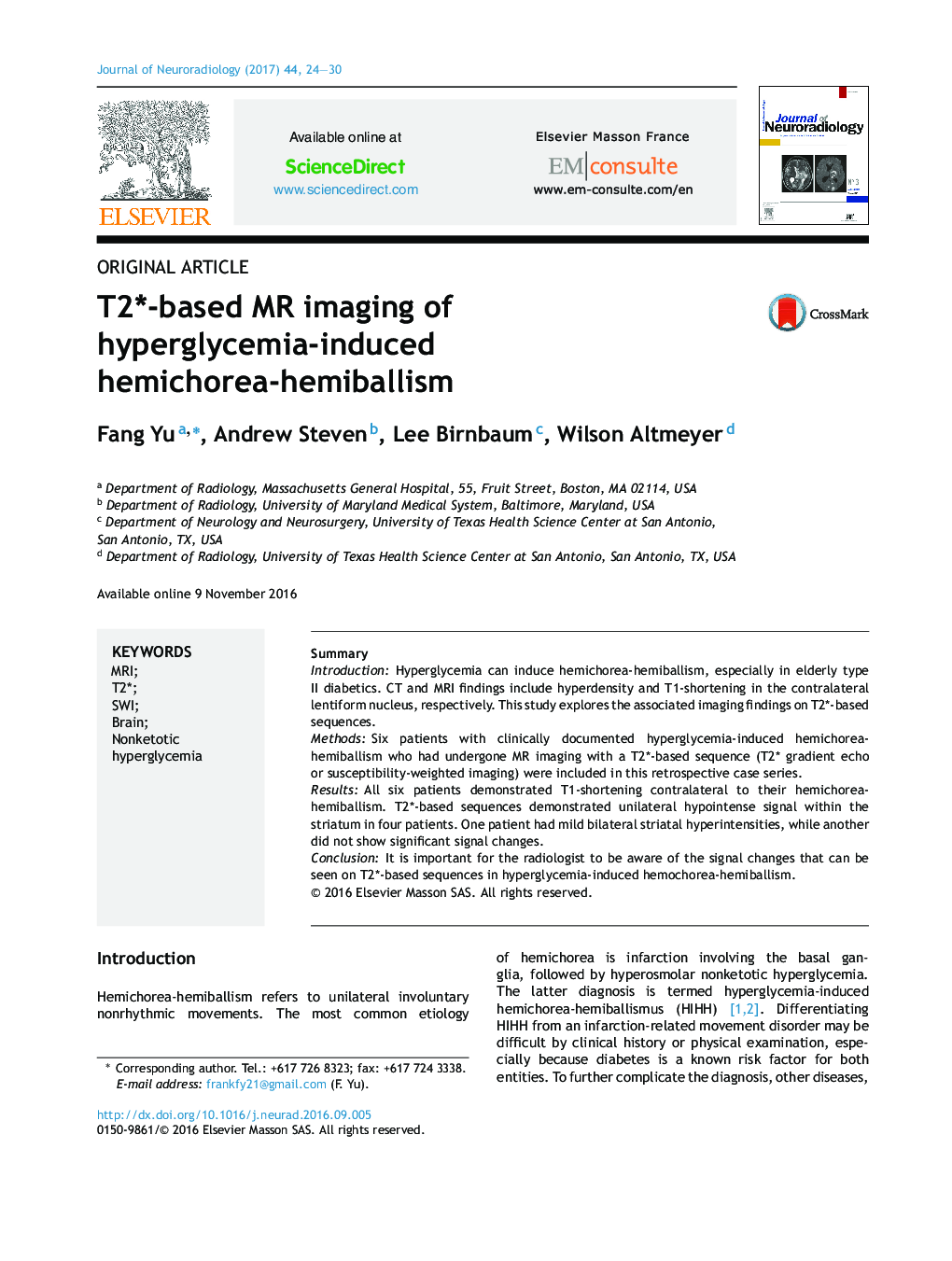| Article ID | Journal | Published Year | Pages | File Type |
|---|---|---|---|---|
| 5727108 | Journal of Neuroradiology | 2017 | 7 Pages |
SummaryIntroductionHyperglycemia can induce hemichorea-hemiballism, especially in elderly type II diabetics. CT and MRI findings include hyperdensity and T1-shortening in the contralateral lentiform nucleus, respectively. This study explores the associated imaging findings on T2*-based sequences.MethodsSix patients with clinically documented hyperglycemia-induced hemichorea-hemiballism who had undergone MR imaging with a T2*-based sequence (T2* gradient echo or susceptibility-weighted imaging) were included in this retrospective case series.ResultsAll six patients demonstrated T1-shortening contralateral to their hemichorea-hemiballism. T2*-based sequences demonstrated unilateral hypointense signal within the striatum in four patients. One patient had mild bilateral striatal hyperintensities, while another did not show significant signal changes.ConclusionIt is important for the radiologist to be aware of the signal changes that can be seen on T2*-based sequences in hyperglycemia-induced hemochorea-hemiballism.
